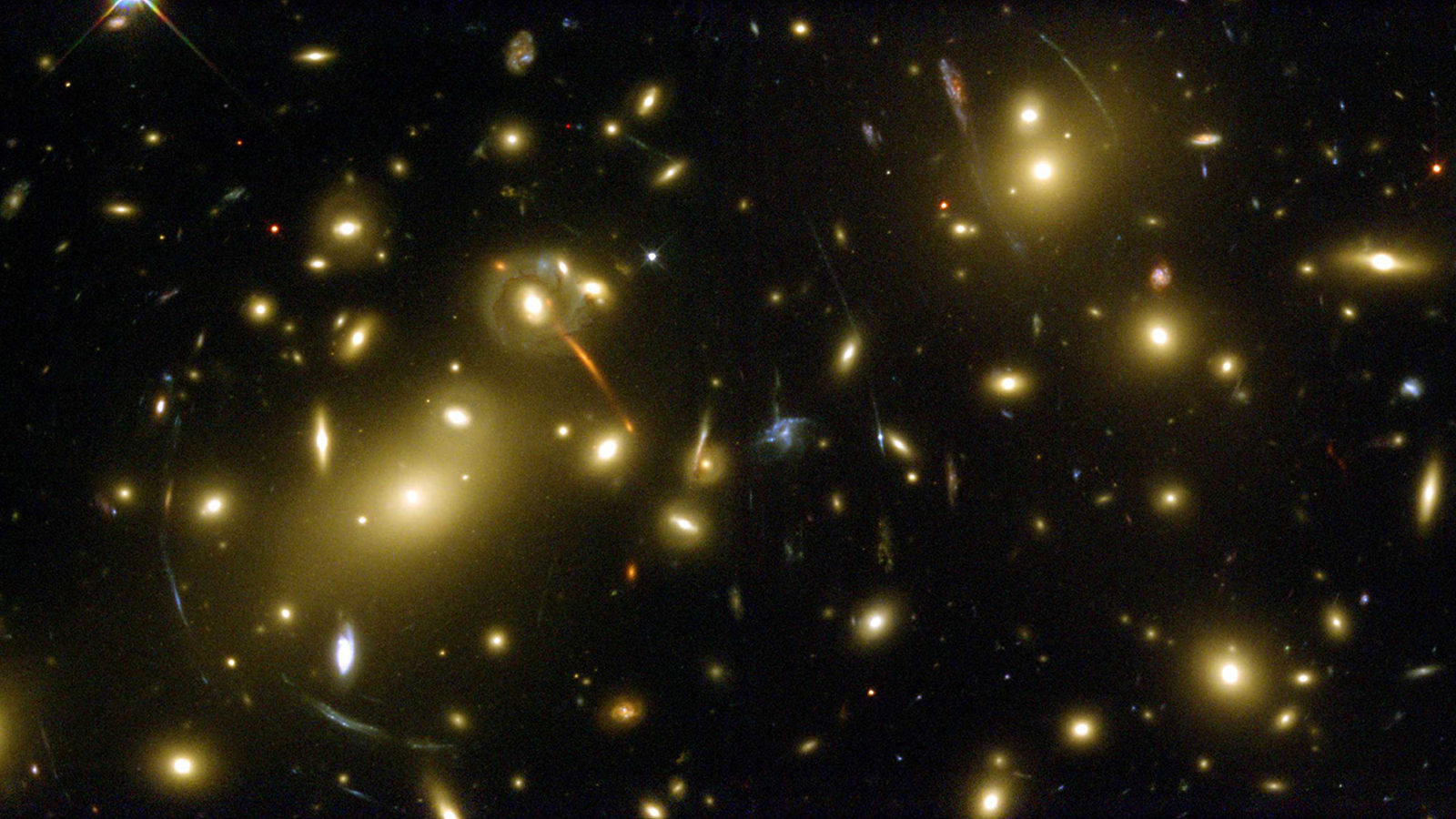Galaxy Clusters and Cosmology - Space Science Faculty
Galaxy Clusters and Cosmology

Our main research areas include:
- The study of galaxy clusters (mass estimates, galaxy evolution), proto-clusters and gravitationally lensed sources in the optical-to-infrared with observatories including JWST, Herschel, Spitzer and HST.
- With the recent launch of Euclid, detection and characterization of galaxy clusters, cosmology, galaxy clustering and weak lensing, and the theory of dark energy and gravity.
Active members
At ESAC :
- Bruno Altieri (Euclid SOC)
- Rachana Bhatawdekar (Archives)
- Xavier Dupac (Euclid SOC)
- Marcos López-Caniego (Planck SOC)
- Ana Maria Perez Garcia (CAB)
- Ricardo Pérez Martinez (XMM-Newton SOC)
- Tim Rawle (Ariel SOC)
- Ivan Valtchanov (XMM-Newton SOC)
At ESTEC:
- René Laureijs
- Valeria Pettorino (Euclid Project Scientist)
Contact point: Bruno Altieri
Former members: Irene Pintos-Castro (Univeristy of Toronto), Joana Santos (2013), Miguel Sanchez-Portal (ESO, IRAM, 2017), Luca Conversi (ESRIN,2018), Maggie Lieu (University of Nottintham, 2019), Ginebra Favole (EPFL, Lausane, 2019), Crispin Logan (ESA Research Fellow,2020)
ESAC trainees: Sophia Milanov (2017), Matej Kosiba (2018), Ditlev Frickmann (2020)
Collaborations
We are involved in several large international collaborations as :
- Euclid (ESA Mission and Consortium)
- JADES: JWST Advanced Deep Extragalactic Survey
- X-CLASS: The XMM Cluster Archive Super Survey
- GOGREEN (Gemini Observations of Galaxies in Rich Early ENvironments)
- XXL survey (XMM-Newton eXtremenly Large survey)
- Herschel Lensing survey
from low-redshift to high redshift clusters as well as proto-clusters.
Publications
- The X-CLASS survey: A catalogue of 1646 X-ray-selected galaxy clusters up to z ∼ 1.5, Koulouridis et al. (2021)
- Understanding X-ray and optical selection of galaxy clusters: a comparison of the XXL and CAMIRA cluster catalogues obtained in the common XXL-HSC SSP area, Willis et al. (2020)
- UV Spectral-Slopes at z=6−9 in the Hubble Frontier Fields: Lack of Evidence for Unusual or Pop III Stellar Populations, Bhatawdekar & Conselice, MNRAS (2020)
- The XXL Survey. XLIV. Sunyaev-Zel'dovich mapping of a low-mass cluster at z ∼ 1: a multi-wavelength approach, Ricci et al. (2020)
- The GOGREEN survey: The environmental dependence of the star-forming galaxy main sequence at 1.0<z<1.5, Old L. et al., MNRAS (2020)
- Multiwavelength classification of X-ray selected galaxy cluster candidates using convolutional neural networks, Kosiba et al., MNRAS (2020)
- The XXL Survey. XXV. Cosmological analysis of the C1 cluster number counts, Pacaud et al., A&A, 2018
- The XXL Survey. XX. The 365 cluster catalogue, Adami et al., A&A, 2018
- The Spitzer Planck Herschel Infrared Cluster (SPHerIC) survey: candidate galaxy clusters at 1.3 < z < 3 selected by high star-formation rate, Martinache et al., A&A, 2018
- Hierarchical inference of the relationship between concentration and mass in galaxy groups and clusters, Lieu et al, MNRAS, 2017
- A complete census of Herschel-detected infrared sources within the HST Frontier Fields, Rawle et al., MNRAS, 2016
- The XXL survey XV: evidence for dry merger driven BCG growth in XXL-100-GC X-ray clusters, Lavoie et al., MNRAS, 2016
- Multi-wavelength landscape of the young galaxy cluster RXJ 1257.2+4738 at z = 0.866. II. Morphological properties, Pintos-Castro et al., A&A, 2016
- The XXL Survey. II. The bright cluster sample: catalogue and luminosity function, Pacaud et al., A&A, 2016
Past workshops and meetings
- Scientific workshop "A multi-wavelength view of galaxy clusters: deriving masses in the era of wide-field surveys", held on September 6-9, 2021.
- The First Spanish Meeting on Galaxy Clusters was held at ESAC on 7 & 8 November 2019
- Removed a total of (1) style float:right;








































 Sign in
Sign in
 Science & Technology
Science & Technology